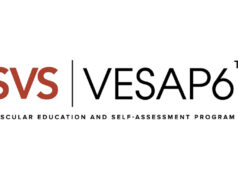
The progress in congress can seem overwhelmingly slow, especially considering the 118th Congress has only passed 27 pieces of legislation while holding over 700 votes. However, rather than being overcome with a sense of discouragement, this is when we should be increasing our persistent efforts to work with our legislators. Some may adopt a mindset of resignation and stop striving for change, but it’s crucial that we continue our efforts without pause during this time. There are several tools that the SVS Advocacy Council uses to organize our collective efforts, such as sending emails to legislators; however, these efforts are driven by membership participation. So, how can we work with Congress to advocate for our patients and practices?
There are several ways that SVS members can participate in these efforts, often referred to as “grassroots” and “grasstops” advocacy.
Grassroots advocacy is the route that is most accessible to the broader population. Think of it like a petition with hundreds or even thousands of signatures. The sheer volume of messages from constituents—the people lawmakers represent—creates pressure to act. The SVS has simplified this process through the VoterVoice page on the SVS website. As issues that are important to our patients and peers arise, VoterVoice simplifies our voice with congressional members. While the perception may be that these letters fall on deaf ears, the message is easily amplified with minimal effort by the membership. When engaging in grassroots efforts, the quantity of communications is key to getting the attention of congressional staf fand legislators. While this approach may seem impersonal, it is still effective when the SVS membership participates widely.
Grasstops efforts can occur when these same constituents develop a strong relationship with their representative offices. Imagine a direct line to the people who make the decisions. That’s the power of grasstops advocacy. This approach focuses on building relationships with those who hold positions of influence, such as business leaders, community influencers, and especially lawmakers’ staff.
These influential figures can become valuable resources for advocacy efforts. For instance, a group might enlist the help of respected community leaders to champion their cause or educate a lawmaker on a specific issue. Think of the program REACH 535, which helps connect advocates with key influencers on Capitol Hill. This connection is similar to the work of the SVS Political Action Committee (PAC). Investing time, energy and, in some cases, campaign contributions to develop strong relationships with lawmakers is one of the best ways to enact change at the federal level.
The key difference between these two approaches lies in their origin. Grassroots is bottom-up, mobilizing the masses, while grasstops is top-down, leveraging existing connections. However, the most effective advocacy often utilizes both strategies.
Lawmakers pay close attention to constituent feedback. While a grasstops connection can educate a lawmaker on the intricacies of an issue, a strong grassroots movement can demonstrate the public’s passionate support and urge the lawmaker to act. The SVS Advocacy Council and SVS staff need continued engagement from the membership to make these efforts effective.
Both grassroots and grasstops advocacy are essential tools for influencing policymakers. By understanding the strengths of each approach, advocates can create a powerful and effective strategy for driving positive change.
Mounir Haurani, MD, is vice-chair of the SVS Government Relations Committee.











